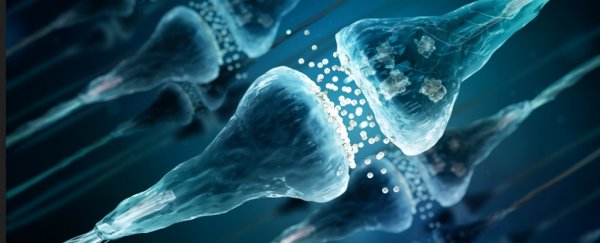The discovery of an aggressive feedback loop between the build-up of protein and nerve damage could be the key to explaining why so many trials of promising new treatments for Alzheimer's disease end in failure.
Researchers have managed to pin down the signalling pathway responsible for this vicious circle of damage in rodents, providing a new target for drugs that stand a greater chance of preventing the runaway degeneration in the brain.
"This is a major step forward in our understanding of the disease and highlights the importance of early therapeutic intervention," says the study's lead author, Christina Elliott from King's College London.
Alzheimer's disease is a neurodegenerative condition caused by the gradual loss of nerve function in the brain, giving rise to dementia as communication between neurons steadily begins to fail.
That increasing loss of function is blamed on an accumulation of two abnormal proteins – beta-amyloid and tau. The current view is as clumps of beta-amyloid form, they kill brain cells directly, while also causing tau proteins to tangle and cause even more damage.
Though recent research contests the exact details of this model, there's little doubt beta-amyloid is an important target for treatments. Preliminary testing is often encouraging, but all too often they fall well short of living up to their promise.
A link between beta-amyloid in nervous tissue and the damage it causes could help explain why the disease is so stubbornly resistant to chemical assaults.
"We show that a vicious positive feedback loop exists in which beta-amyloid drives its own production," says senior author Richard Killick, also from King's College London.
"We think that once this feedback loop gets out of control, it is too late for drugs which target beta-amyloid to be effective, and this could explain why so many Alzheimer's drug trials have failed."
The conditions that kick off this accumulation in the first place are still hotly debated; as with most neurological conditions, they most likely come down to a complex mix of genes and environment.
It's understood that a protein called Dickkopf-1 (Dkk1) plays a major role in the damage process.
This inhibitor upsets the balance between two types of cell signalling pathways, forcing neurons to dismantle structures that stabilise their synapses – the communications points between nerves – causing them to break down.
Beta-amyloid increases Dkk1 activity, helping explain why a build-up of the protein causes nerve cells to traumatically change.
Following a series of experiments on nervous tissues collected from engineered mice and rats, researchers have established the biochemical changes that cause neurons to modify their synapses also happens to increase the production of beta-amyloid.
That means as the protein begins to accumulate, it kicks off a cascade of effects that force cells to pull in their synapses, which in turn produces more beta-amyloid… in a feedback loop that quickly gets out of hand.
"Our work uncovers the intimate link between synapse loss and beta-amyloid in the earliest stages of Alzheimer's disease," says Elliot.
Identifying the agents responsible for this cycle of destruction makes it possible to develop drugs that could intervene before the runaway loop spirals out of control.
In fact, the researchers already have a treatment in mind, which seems effective in mice engineered to develop human-like characteristics of Alzheimer's disease. What's more, it's already being used for a completely different medical condition.
"Our work has shown that we may already be in a position to block the feedback loop with a drug called fasudil which is already used in Japan and China for stroke," says Killick.
"We have convincingly shown that fasudil can protect synapses and memory in animal models of Alzheimer's, and at the same time reduces the amount of beta-amyloid in the brain."
It's hard to remain optimistic with so many potential Alzheimer's treatments not making the grade. By identifying the obstacles that make this such a challenging disease to tackle, we just might have a better shot at success.
This research was published in Translational Psychiatry.
